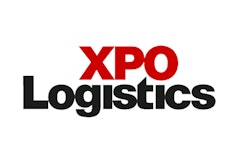
“Digital procurement” is a hot new buzzword within the industry. Depending on who you believe, it could either transform your team and how you work with stakeholders or it could eliminate the procurement department in another 20 years.
What exactly is digital procurement, anyway? Why is it important? How can you take advantage of it? Do you need a digital strategy?
Here’s our take on some of these questions.
What is digital procurement?
The general consensus is that digital procurement is applying digital technologies across the procurement function. We would go a bit further and say that it’s truly about transformation. The application of digital technologies should be about transforming the function to become far more internal customer focused, and not simply about finding bits and pieces of the department to digitalize.
In line with that, it’s all about creating a digital-forward procurement model. One where procurement organizations are focusing on more differentiating, value-adding activities and strategic decision-making augmented by advanced technologies such as cognitive computing and advanced analytics.
Why is digital procurement important?
Digital transformation can be a competitive advantage by improving insights, spend and how procurement interacts with and serves its stakeholders.
This transforms procurement into a vehicle that not only manages costs but unleashes the potential of the supply base and market to significantly improve business performance.
How can you get ‘digital ready’? Our five-point checklist
While many organizations are unsure about digital procurement means for them, experience suggests that a mix of attributes and pre-requisites are required in order to succeed. This five-point checklist can help any procurement organization become ‘digital-ready’:
1. Access to data:
o Do you have sufficient data available?
o Is it relevant, structured and organized?
o Is it easily accessible?
2. Technology readiness:
o Is your organization open to the adoption of new technologies?
o Is your team tech-savvy and quick to adopt new technologies?
o Do you have the budget for technology investments?
3. Access to analytical skills:
o Do you have access to the right talent and skills needed to operationalize your digital strategy?
o Do you have access to a cross-functional team of people with distinct skills such as knowledge of data science and AI, category/business expertise, IT professionals who understand the technology tools and software applications and design professionals?
4. The right policies and processes:
o Do you have the right policies in place that will support your digital strategy?
o Is there a clear, defined framework of roles and responsibilities?
o Is there an opportunity to redefine the procurement operating model or processes to accommodate the progressive digital agenda?
5. Senior level support:
o Are your senior stakeholders truly pro-technology? Do they see it as more than a simple efficiency tool?
o Do you have adequate support from your senior stakeholders, including both the vision and inclination to prioritize and commit resources?
How can you take advantage of digital procurement? Our four-step guide:
All this is very good in theory, but how do you put it into practice? How do you develop a successful digital strategy? Here are four specific steps that procurement organizations need to take:
1. Valued-based procurement strategy
The starting point is to develop a strong overall procurement strategy – one that is customer-centric and focused on delivering the best total value to your stakeholders. This might mean the emphasis is on cost reduction, but it could also mean the emphasis is on supply assurance, quality assurance or risk reduction or innovation despite the cost.
2. Digital assessment
The next step is to then embed “digital” into these strategies, which starts with answering a host of questions:
· Which of our objectives will digitization help solve?
· What degree of impact will digital bring to these outcomes?
· Where will digitization deliver the highest impact?
Understanding how digital plays in your space can support this assessment.
3. Tools and tech
Once you understand and answer those questions, you can then take the next step, which is to identify the right tools and technologies to implement this strategy. These tools should be straightforward to adopt, user friendly and easy to implement within the data environment of your organization and ensure they can help address your procurement objectives and technology questions.
4. Phased implementation
Once your digital needs are defined, you need to plan to implement the strategy in phases, evaluating success at regular intervals. The point here is simple: get things done, deliver quick wins and show results. Getting buy-in and fostering champions to help spread the word will make subsequent implementation steps much easier.
Where is digital procurement headed?
According to Deloitte’s Global CPO Survey, in the near term, three technology areas are likely to have the biggest impact on procurement – analytics, the renewal of strategic procurement tools (such as sourcing and supplier management) and the renewal of operational procurement tools (such as requisition and payment).
As digital technologies continue to evolve and leading-edge capabilities become more accessible, the opportunities to enhance procurement’s performance and contribution to a business will surge. For progressive CPOs across the globe, digital procurement should be a central feature of their growth and transformation agenda.












